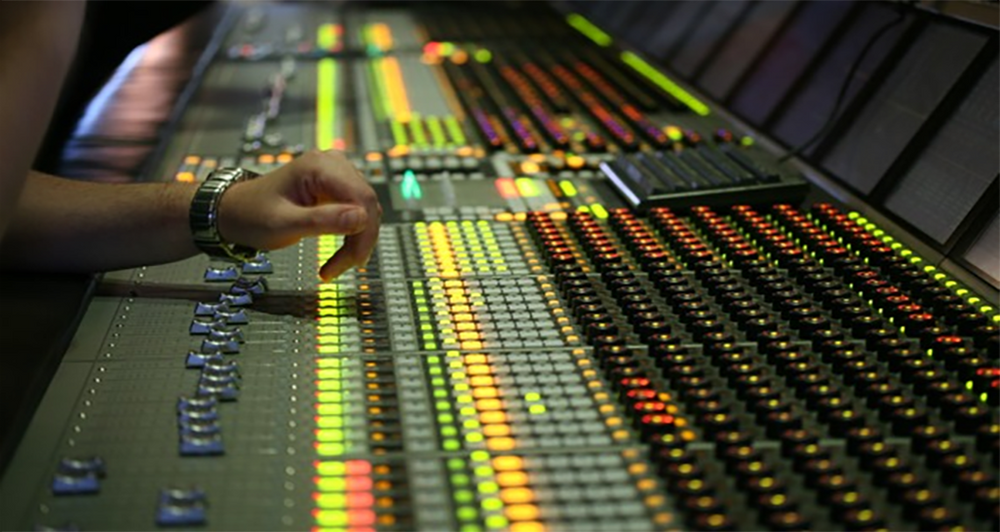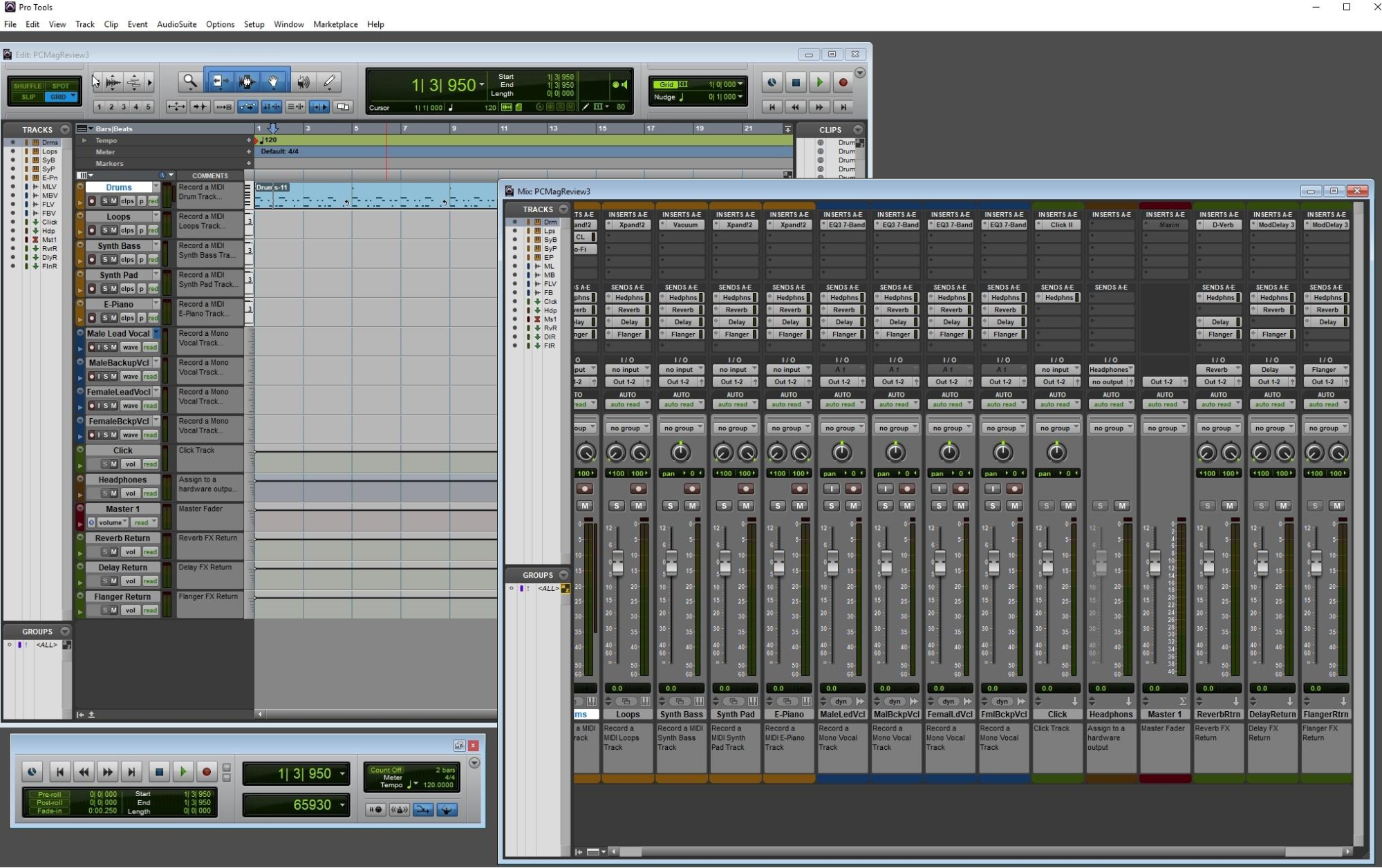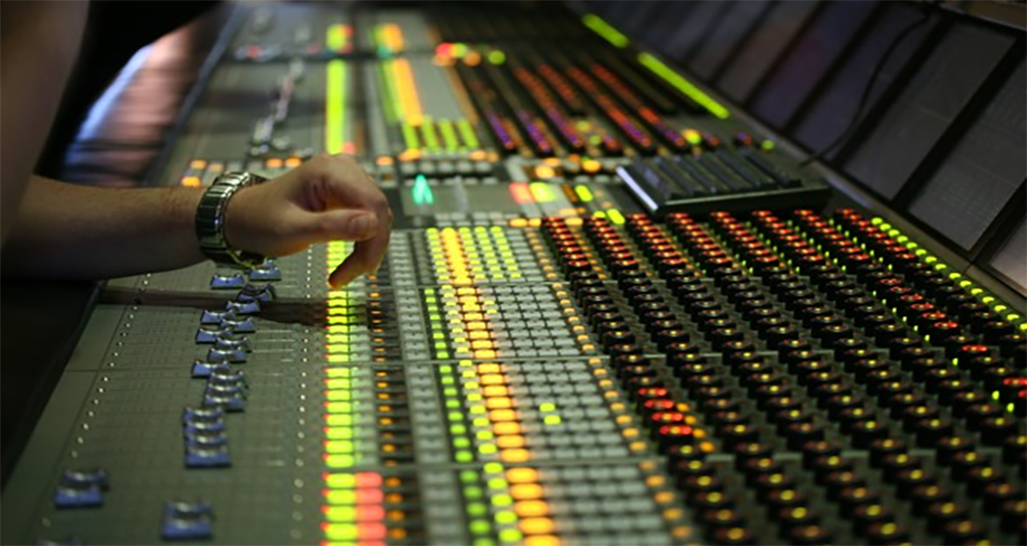Post-production
What is sound design?

No matter how awesome a movie looks or how cool a product looks in a video, none of that can cover up bad or even average audio. That’s why sound design is critical when making a video. What is sound design? PremiumBeat summarizes it nicely as a process of experimentation to create an audio environment that supports what’s on screen. In other words, you design and clean up the sound experience viewers are going to have.
You're only as good as your weakest link in the ecosystem of sound, of audio.Jimmy Lovine, Co-Founder of Interscope Records.
When Does Sound Design Begin?
Sound design begins during the post-production process. Once a production has wrapped and all the footage and audio has been handed to an editor, post-production begins. Sound design will start after everything has been edited. Sound, along with color correction, are generally the last pieces of the puzzle before something goes live.
Once that final edit has been made, the sound designer gets audio files that correspond or sync to the visual. And if there is dialogue or music, then those will also translate to the designer’s audio software (which we’ll discuss later in the article).
- Sound design is one of the last steps of post
- The sound designer receives audio files that correspond or sync to the visual
- Dialogue and music will translate into the designer’s software
Reading the Script and Discussing the Project
Just like everyone else, sound designers read the script and talk to the director. Having a clear understanding of the project’s concept early on is key. Rajiv Agarwal at AudioShapers gives the perfect explanation as to why. Part of sound designing is creating the environment in the video. But sound can also be used to aid the audience’s emotional and dramatic connection with the performance.
Half of the storytelling ability is sound.Joe Herrington, Principal Media Designer for Disney parks in the Imagineering department.
If the director envisions the scene as dark and moody, you don’t want pop music playing in the background. The same can be said for comedies. If the punchline is about to drop, you don’t want music that’s straight out of a horror movie (unless it’s part of the joke).
- Sound designers start of reading the script and talking to the director
- Designing the sound is creating the video’s environment
- The sound needs to match the tone of the scene
So Many Softwares, Which Should I Use?
Let’s take a moment to talk about software. You may have heard your audio guy talking about a DAW and wondered, “what the hell is that?” DAW. Digital Audio Workstation. These softwares are used for composing, producing, recording, designing, mixing, and editing audio.
There are a lot of these softwares, some free and some with a hefty price tag. But for this article, we’ll briefly discuss two of the most commonly used ones.
Pro Tools is an industry standard. You’ll see it used for editing audio for videos, recording and producing music, and a number of other things. It’s considered to be the cleanest audio editing workflow on Earth, and I completely agree.
Throw in it’s fast 64-bit recording and mixing engine, high-end hardware, the Factor and Plugsound sound packs, plus a bunch of other nerdy audio terms, and it’s worth the high cost if you’re doing this for a living. You know those Star Wars movies? Yeah, they’re audio was done on this software.

Ableton Live is another one you’ll hear people talking about. If you compare the look of Ableton to the look of Pro Tools, you might be a little confused. It looks different and nothing like other DAWs. So why do people like it? Because it’s simple. It’s considered by far to be the simplest to navigate and use.
Now simple does not mean it lacks the power and polish of other DAWs. When it comes to that, it keeps up with its competitors. Simple also doesn’t connect with the price. Like Pro Tools, this software can be pricey, but it comes with 3 different price levels: Intro, Standard, and Suite.

- DAW is a Digital Audio Workstation software used by anyone in the audio industry
- Pro Tools is the industry standard and has the cleanest workflow
- Ableton Live is known for being the easiest to navigate and use
Plugins? I Thought This Was About Sound?
I know, I know, another industry term. But best we get them out of the way now. So, plugins are small pieces of code that can be “plugged in” to a DAW to enhance what they can do. That’s the basic definition, and all you need to know for this article.

Cleaning Up or Enhancing Dialogue
Now, let’s jump into actual sound design and what happens in this process. First, there are 5 key elements to what makes up a video’s sound: dialogue, foley, sound effects, background music, and music.
Let’s start with dialogue, which is one of the most important elements. FilmAndMediaArts.com will tell you, dialogue is more than just recording a character speaking. Using effects from your DAW or plugins can help add to the texture of the actor’s voice. This can bring out a whole new character rather than just watching an actor say words with some emotions.
Sound design on dialogue can also sometimes include cleaning up the dialogue. Remember the sacred rule: you can’t fix badly recorded audio. But, sometimes you can hear the tiniest hum from an air conditioner or maybe the room wasn’t acoustic enough when recording. That can sometimes be fixed.
Your sound designer will want to denoise the track. This just means reducing the noise that doesn’t belong. This can be done using the room tone recorded on set, or also with the help of DAW plugins. And does an actress sound a little further away for a second because she shifted away from the mic? EQ-matching tools can help massage the outlier this caused.
- 5 Key Elements to Sound: Dialogue, Foley, Sound Effects, Background Music, and Music
- Sound design can help to add texture to an actor’s voice
- Dialogue can also be cleaned up at this stage by denoising the track
Foley -- The Art of Creating Sound
SOUNDFLY is right; most sound you hear in a movie or any other video content is usually added in post. Did you hear the rustle of fabric? The sound of footsteps? Someone pouring a drink? That is called foley.

Foley is sound effects designed to sync with the actions of the characters on screen. These sounds are usually created in a recording studio while the foley artists watch the video. Wondering what that looks like? Watch this video by SoundIdeasCanada, and see an amazing and classic example of foley artists creating sound.
- Foley are sound effects that line up with what the characters are doing
- These sounds can be footsteps, pouring a drink, closing a door, etc
- Foley is created by foley artists in a studio
You know music and sound design can be very powerful with how you use it but also the absence of sound can say a lot as well.James Wan, film director of “Saw” and “Insidious”.
Sound Effects
Surely we all know what sound effects are. But you may wonder what the difference between sound effects and foley is. While foley is sound corresponding to what a character is doing, sound effects have nothing to do with the actions of a character.
Often, these help to create the environment. Sound effects include the sounds of bird chirping, children laughing in the distance, cars going by, or a UFO flying overhead.
- Sound effects have nothing to do with what the actors are doing on screen
- They create the environment around the characters
- These can be birds chirping, a dog barking, or an airplane flying overhead
Music -- How Does it Fit In?
Music, no matter the capacity, is important to a video. Now, not every sound designer is given the task of choosing the music. Sometimes directors already know what music they want, or clients have something picked out. But picking the right music is critical, and making it fit in with the design is key.
For something like a commercial, the pacing of the music needs to match the pacing of the edit. Otherwise it’s thrown off. In a film, music can add tension or emotion to a scene. Music can never be an afterthought.
- Picking the right music is critical to a video
- Not all sound designers are tasked with choosing the music
- Music in a commercial needs to align with the pacing of the edit
- In a film, music can add a new depth to the tone or emotion of the scene
So, I’ve Heard Sound Design and Sound Mixing. What’s the Difference?
Sound design is finished… but wait! Now I have to sound mix? Aren’t they the same thing? No! While the two jobs are often done by the same person, they are not the same thing. Mixing comes after designing.
Once a sound designer has fixed up and enhanced the dialogue, created and included amazing foley and sound effects, and dropped in the perfect music, then it’s time to mix. Mixing is finding that fine balance between the sound effects, foley, music, and dialogue. And that is for another article.
- Sound designing and sound mixing are two different things
- Mixing will take place after designing
- Sound mixing will be about finding the balance between all the sound
As said at the beginning of the article it's a process of experimentation so go out there and start experimenting with your sound design. Remember that it's all about the viewer's experience, the work you put into the sound design will have a lasting and positive effect on your audience.


